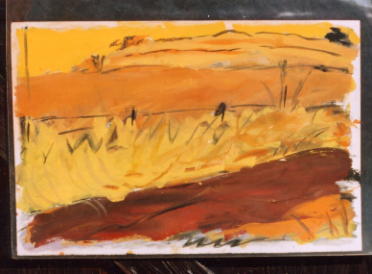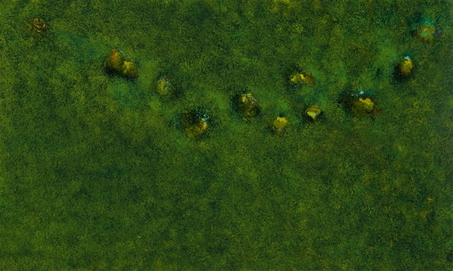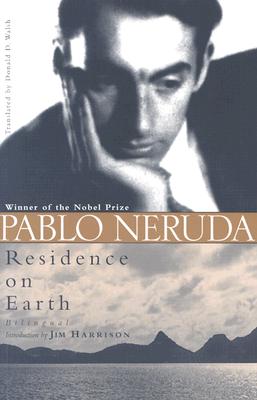Patrick Keiller bibliography
Keiller, Patrick:”Imaging” in Matthew Beaumont and Gregory Dart (eds): Restless Cities (London: Verso, 2010), pp.139-154.
Keiller, Patrick: “Landscape and Cinematography”, Cultural Geographies, Vol. 16, No. 3, 2009, pp.409-414; http://cgj.sagepub.com/cgi/pdf_extract/16/3/409
Keiller, Patrick: “Popular Science” in Anthony Kiendl (ed.): Informal Architectures: Space and Contemporary Culture (London: Black Dog, 2008), pp. 32-37.
Keiller, Patrick: “Urban Space and Early Film” in Andrew Webber and Emma Wilson (eds): Cities in Transition: The Moving Image and the Modern Metropolis (London, New York: Wallflower, 2008), pp. 29-39.
Unwin, Richard: review of The City of the Future, BFI Southbank Gallery, in Frieze 114, April 2008; http://www.frieze.com/issue/review/patrick_keiller
Dillon, Brian: review of The City of the Future, BFI Southbank Gallery, London in Modern Painters, March 2008, pp.84-85.
Keiller, Patrick: “Phantom Rides: The Railway and Early Film” in Matthew Beaumont, Michael Freeman (eds): The Railway and Modernity: Time, Space, and the Machine Ensemble (Oxford etc: Peter Lang, 2008), pp.69-84.
Hanks, Robert: review of The City of the Future in The Independent Extra, 22 November 2007, pp.14-15; http://www.independent.co.uk/arts-entertainment/art/reviews/a-cinematic-show-puts-a-new-twist-on-historical-perception-765004.html
Keiller, Patrick: feature article in Time Out, 21 November 2007, p.67; http://www.timeout.com/film/features/show-feature/3841/patrick-keiller-interview.html
Keiller, Patrick:”Phantom Rides”, The Guardian Review, 10 November 2007, p.14; http://www.guardian.co.uk/books/2007/nov/10/2
Hardingham, Samantha and Rattenbury, Kester: Supercrit #1: Cedric Price Potteries Thinkbelt (Abingdon: Routledge 2007), pp.110-111.
Walker, Ian: So Exotic, So Homemade: Surrealism, Englishness and Documentary Photography (Manchester: Manchester University Press, 2007), pp.160-186.
Keiller, Patrick: “Londres, Bombay” in Vertigo Vol. 3 No. 6 Summer 2007, pp. 38-39, 42-23.
Keiller, Patrick: “Film as Spatial Critique” in Mark Dorrian, Murray Fraser, Jonathan Hill, Jane Rendell (eds): Critical Architecture (London, New York: Routledge, 2007), pp.115-123.
Keiller, Patrick: ‘The City of the Future’ in Alan Burton, Laraine Porter (eds): Picture Perfect: Landscape, Place and Travel in British Cinema before 1930 (Exeter: Exeter University Press, 2007), pp.104-112, abridged at http://www.bftv.ac.uk/newslet/0304p3.htm
Anderson, Jason: “London Mapping: Patrick Keiller’s Peripatetic Hybrids”, interview with Patrick Keiller, Cinema Scope 26, 2006.
Keiller, Patrick:”Coal Hopper, Nine Elms Lane, ” in Iain Sinclair (ed): London: City of Disappearances (London: Hamish Hamilton, 2006), pp.292-295.
Burke, Andrew: “Nation, Landscape and Nostalgia in Patrick Keiller’s Robinson in Space”, Historical Materialism 14:1, 2006, pp.3-29; http://www.ingentaconnect.com/content/brill/hm/2006/00000014/00000001
Connarty, Jane; Lanyon, Josephine and others: Ghosting: The Role of the Archive within Contemporary Artists’ Film and Video (Bristol: Picture This, 2006), pp.106-109.
Mazierska, Ewa & Rascaroli, Laura: Crossing New Europe: Postmodern Travel and the European Road Movie (London: Wallflower, 2006), pp.57-78.
Dave, Paul: Visions of England: Class and Culture in Contemporary Cinema (Oxford, New York: Berg, 2006), pp.119-140.
Making History: Art and Documentary in Britain from 1929 to Now (Liverpool: Tate Liverpool, 2006), pp.38, 46-47.
Pile, Steve: Real Cities: Modernity, Space and the Phantasmagorias of City Life (London: Sage, 2005), pp.4-12.
Keiller, Patrick: “Motion Pictures”, The Guardian Review, 21 May 2005, pp.18-19; http://www.guardian.co.uk/film/2005/may/21/2
House, John & Keiller, Patrick: “River of Dreams”, Tate Etc. 3 (Spring 2005), pp.100-107; http://www.tate.org.uk/tateetc/issue3/riverofdreams.htm
Demorgon, Laurence: “Robinson, pélerin du monde global”, “Architecture d’aujourdhui“350, January-February 2005, pp.24-25.
Keiller, Patrick: “Tram Rides and Other Virtual Landscapes” in Simon Popple, Patrick Russell, Vanessa Toulmin (eds): The Lost World of Mitchell & Kenyon: Edwardian Britain on Film, (London: BFI, 2004), pp.191-200.
Mayer, Robert: “Not Adaptation but Drifting : Patrick Keiller, Daniel Defoe, and the Relationship between Film and Literature”, Eighteenth-Century Fiction 16:4, July 2004, pp.803-827; http://digitalcommons.mcmaster.ca/cgi/viewcontent.cgi?article=1721&context=ecf
Misselwitz, Philipp: “Reichtmer im Zerfall”, interview with Patrick Keiller in Philipp Oswalt (ed): Schrumpfende Städte, (Berlin: Hatje Cantz Verlag, 2004), pp.554-559; English edition 2006, pp.554-559.
Keiller, Patrick: ‘The City of the Future’ in City 7:3, November 2003, pp.376-386.
Dillon, Brian: ‘London Calling’, interview with Patrick Keiller in Frieze 78, October 2003, pp.78-81 http://www.frieze.com/issue/article/london_calling/
O’Pray, Michael: Avant-Garde Film: Forms, Themes and Passions (London, New York: Wallflower, 2003), pp.107-118.
Keiller, Patrick: ‘London in the Early 1990s’ in Andrew Gibson and Joe Kerr (eds): London from Punk to Blair (London: Reaktion, 2003), pp.353-361 and AA Files 49: London: Postcolonial City (London: Architectural Association, 2003), pp.20-24.
Keiller, Patrick: ‘London-Rochester-London’ in Cedric Price and others: Re:CP (Basel, Boston, Berlin: Birkhäuser, 2003), pp.168-185.
O’Neill, Eithne: London and Robinson in Space review in Positif 509/510 (July/August 2003), p.138.
Keiller, Patrick: ‘The Poetic Experience of Townscape and Landscape’ and ‘Atmosphere, Palimpsest and Other Interpretations of Landscape’ reprinted in Nina Danino & Michael Mazière (eds): The Undercut Reader (London, New York: Wallflower, 2003), pp.75-83, 204-208.
Keiller, Patrick: ‘Sexual Ambiguity and Automotive Engineering’ in Peter Wollen and Joe Kerr (eds): Autopia (London: Reaktion, 2002), pp.342-353.
Evans, Gareth: The Dilapidated Dwelling review in Time Out (8-15 May 2002); http://www.timeout.com/film/reviews/65464/the-dilapidated-dwelling.html
Keiller, Patrick: ‘Architectural Cinematography’ in Kester Rattenbury (ed): This Is Not Architecture (London, New York: Routledge, 2002), pp.37-44.
Martin-Jones, David: interview with Patrick Keiller, Journal of Popular British Cinema, 5-2002, pp.123-132.
Keiller, Patrick: The Robinson Institute, eBook in series Species of Spaces for diffusion.org.uk, 2002; http://diffusion.org.uk/?p=62
Keiller, Patrick: ‘Port Statistics’ in Iain Borden, Joe Kerr, Jane Rendell, Alicia Pivaro (eds): The Unknown City (Cambridge MA, London: MIT, 2001), pp.442-458.
Eisner, Ken: The Dilapidated Dwelling review in Variety, December 18-31, 2000; http://www.variety.com/review/VE1117796949.html?categoryid=31&cs=1
Bruzzi, Stella: New Documentary: a critical introduction (London: Routledge, 2000), pp.99-123.
Dave, Paul: ‘Representations of Capitalism, History and Nation in the Work of Patrick Keiller’, in Justine Ashby and Andrew Higson (eds): British Cinema, Past and Present (London: Routledge, 2000), pp.339-351.
Smith, Claire: ‘New Art Cinema in the 90s’, in Robert Murphy (ed): British Cinema in the ’90s (London: BFI, 2000), pp.145-155.
Keiller, Patrick: ‘Popular Science’, in Landscape (London: British Council, 2000), pp.60-67.
Kerr, Joe: interview with Patrick Keiller in Bob Fear (ed): Architecture + Film II, Architectural Design, 70:1, January 2000, pp.82-85.
Keiller, Patrick: Robinson in Space and a Conversation with Patrick Wright (London: Reaktion Books, 1999).
Richard Wentworth’s Thinking Aloud (London: National Touring Exhibitions, 1998), p.33.
Keiller, Patrick: ‘The Dilapidated Dwelling’ in Sarah Wigglesworth and Jeremy Till (eds): The Everyday and Architecture, Architectural Design 68:7-8, 1998, pp.22-27.
Dave, Paul: ‘The Bourgeois Paradigm and Heritage Cinema’, New Left Review 224, July-August 1997, pp.111-126; http://www.newleftreview.org/?view=1914
Barwell, Claire: interview with Patrick Keiller, Pix 2, 1997, pp.158-165.
Sinclair, Iain: Lights Out For the Territory (London: Granta, 1997), pp.306-317.
Sorensen, Colin: interview with Patrick Keiller, London on Film (London: Museum of London, 1996), pp.160-161.
Daniels, Stephen: “Paris Envy: Patrick Keiller’s London“, History Workshop Journal, 40:1, 1995, pp.220-222; http://hwj.oxfordjournals.org/cgi/pdf_extract/40/1/220
Keiller, Patrick: ‘The Tourist Poem’, Umeni XLIII:1-2, UDU AVCR, Prague, 1995, pp.45-47.
Price, Anna: interview with Patrick Keiller, Artifice 1, 1994, pp.26-37.
Keiller, Patrick: ‘The Visible Surface’, Sight and Sound, November 1994, p.35.
Keiller, Patrick: 1994 Berlin Film Festival programme text for London, reprinted as ‘Filming London Obliquely’, Regenerating Cities 7, 1994, pp.54-55.
Sinclair, Iain: ‘Necropolis of Fretful Ghosts’, Sight and Sound, June 1994, pp.12-15.
The British Art Show 1990 (London: South Bank Centre, 1990), pp.76-77, 134.
Keiller, Patrick: ‘Modern Architecture in Czechoslovakia 1919-1939’, published as ‘Czech Perspective’, Building Design, 13 March 1987, pp.22-25.
O’Pray, Michael: review of Norwood, Monthly Film Bulletin, October 1984, pp.322-323.
Keiller, Patrick: ‘Atmosphere, Palimpsest and Other Interpretations of Landscape’, in Undercut 7-8, 1983, pp.125-129.
Keiller, Patrick: ‘The Poetic Experience of Townscape and Landscape’, in Undercut 3-4, 1982, pp.42-48.
see also:





